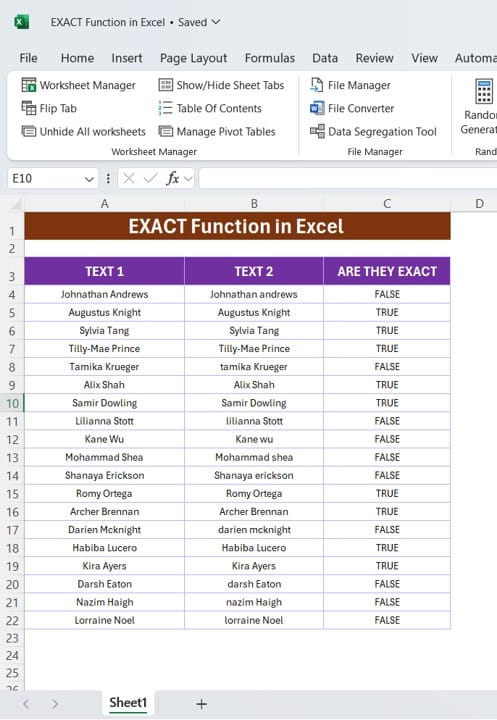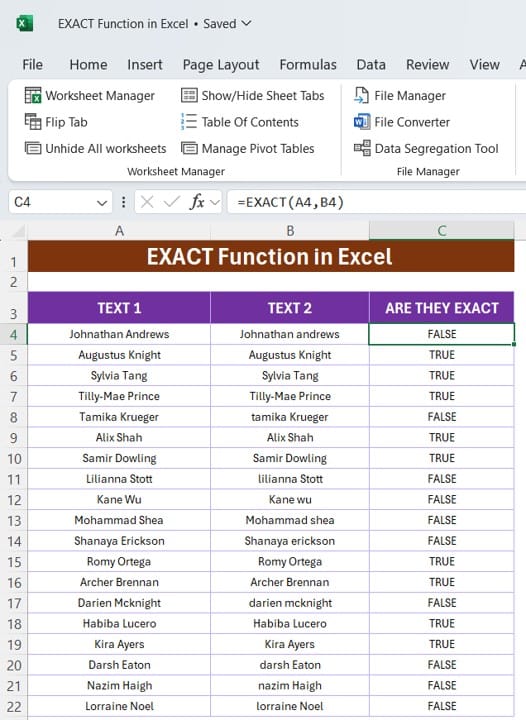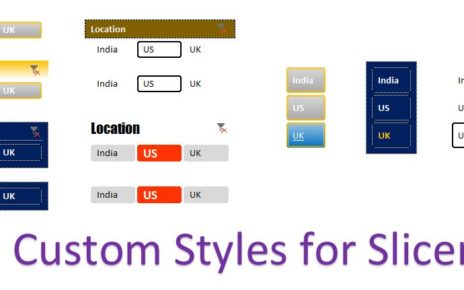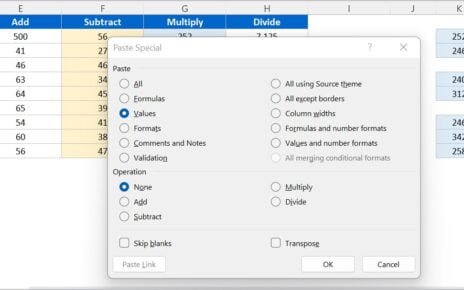If you’ve ever needed to compare two text values in Excel to check for exact matches, regardless of capitalization, the EXACT function is here to help! In this guide, we’ll walk you through the EXACT function in Excel, how it works, and why it’s an essential tool for text comparison tasks. Plus, we’ll explore a practical example to see this function in action. Let’s get started!
What is the EXACT Function in Excel?

The EXACT function in Excel is designed to compare two text strings, checking if they are identical, including capitalization. Unlike simple cell comparisons, EXACT goes further by ensuring that case sensitivity is respected, making it useful when precise matches are required.
The syntax for the EXACT function is straightforward:
=EXACT (text1, text2)
- text1: The first text string or cell reference you want to compare.
- text2: The second text string or cell reference you want to compare to the first.
What EXACT Function Returns
- If the text in both cells matches exactly (including case), EXACT returns TRUE.
- If there is any difference, whether in letters or capitalization, it returns FALSE.
This function is particularly useful in situations where capitalization is significant, like validating names, codes, or other sensitive data.
Practical Example of Using the EXACT Function

To understand the EXACT function better, let’s dive into a practical example. Imagine we have a list of names in Column A and similar names in Column B. We want to find out if each name in Column A matches exactly with its counterpart in Column B, considering capitalization.
Using the EXACT Function Step-by-Step
In this example, we want Excel to automatically determine if each pair of names in TEXT 1 (Column A) and TEXT 2 (Column B) are exact matches, considering case. Here’s how we can set this up:
- Select the cell where you want the comparison result to appear. For this example, we’ll start in C4.
- Enter the EXACT formula:
=EXACT (A4, B4)
This formula will compare the text in cell A4 with the text in cell B4.
As shown in the results, TRUE indicates an exact match, while FALSE indicates that the entries do not match exactly, either due to different capitalization or spelling differences.
Key Takeaways and Benefits of the EXACT Function
The EXACT function in Excel is simple but incredibly useful in scenarios where exact text matching is essential. Here are some key benefits:
- Case Sensitivity: Unlike basic cell comparisons, EXACT ensures that even capitalization differences are noted.
- Data Validation: It’s perfect for quality checks, such as verifying names or codes that need exact matches.
- Efficiency: EXACT can save you a significant amount of time when used across a range of cells, helping identify mismatches quickly.
Conclusion
The EXACT function in Excel is a powerful yet easy-to-use tool that ensures precision in text comparisons. From checking names in databases to validating codes, it helps prevent errors by identifying exact matches. Try it in your next project to see how it can enhance your data accuracy!
Using the EXACT function effectively ensures that you can trust your data and catch any discrepancies with ease. So go ahead, give it a try, and let Excel do the comparison work for you!
Visit our YouTube channel to learn step-by-step video tutorials
View this post on Instagram
Click hare to download the practice file



